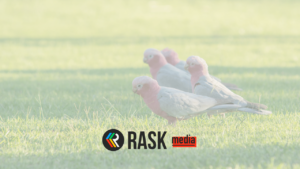Woolworths Group Ltd (ASX: WOW) and Westpac Banking Group (ASX: WBC) are two of Australia’s biggest blue chips with status as two ASX share dividend favourites.
Woolworths is Australia’s largest grocery & alcohol business and Westpac is the second biggest bank in the country. Westpac runs several chains of banks including RAMS, Bank of Melbourne and St. George Bank.
Let’s look at the dividend yield first.
The Dividend Yield
Woolworths has a historical fully franked dividend yield of 3.4%, which rises to 4.9% when franking credits are included.
Westpac has a historical fully franked dividend yield of 7.3%, which rises to 10.4% including franking credits.
I mentioned that the yields are ‘historical’ because past dividends are not a guarantee of future dividends.
Westpac clearly wins this first round, but there’s more to consider a dividend than just the starting yield.
The Safety Of The Dividend
In 2016 Woolworths cut its dividend from $1.39 to $0.77 per share. Just because a business sells ‘defensive’ products like food and drink doesn’t mean it’s safe from competitive pressures. Woolworths took the expensive decision to close Masters home improvement stores and had to reduce prices to combat Aldi.
However, Woolworths’ dividend has increased each year since 2016, with Woolworths growing profits again and again. Woolworths generated ‘continuing earnings per share (EPS)’ of $1.23 in its 2018 financial year, meaning its $0.77 dividend translated to a 62.6% payout ratio.
Westpac generated EPS or ‘profits per share’ of $2.375 in 2018 and it paid a fully franked dividend of $1.88 per share. This is payout ratio of 79% of earnings.
Woolworths has a lower payout ratio, which means they have more profit available to invest back in the business. In other words, if they had the same dividend payout ratio, Westpac would have a much higher yield because of its low valuation to earnings.
The Westpac dividend has been unchanged since 2016, but the Woolworths dividend is steadily growing.
Bottom line: A dividend is only as safe as the underlying profit over the long-term. A dividend can only grow with the profit.
Are the Woolworths and Westpac Profits Sustainable?
Woolworths and Westpac have a loyal customer base. Westpac borrowers pay their mortgage payments monthly, whilst Woolworths shoppers go to their local supermarket typically at least once a week. Both sources of earnings are defensive, suggesting that the dividend may be sustainable.
A decade ago, Woolworths had a profit margin that made it the envy of supermarket peers across the world. However, pressure from international competitors like Aldi and Costco made management reduce supermarket prices to stay competitive. Now, Amazon Australia is also stepping up its game in the food space. However, for now at least, its supermarket sales and the profit margins are growing.
On the other hand Westpac is facing heat from the Royal Commission and the falling housing market is raising concerns from investors about the likelihood of growing bad debts. Westpac’s all-important net interest margin (NIM) has been slowly falling in recent years, and if it keeps falling it could suggest higher costs or competition from smaller competitors, like Bank of Queensland Limited (ASX: BOQ) and Bendigo and Adelaide Bank Ltd (ASX: BEN), is intensifying.
Which One Is The Better Dividend Buy?
I don’t think either blue chip can be counted as a great investment at this time.
If I were forced to choose one it would probably be Westpac if I were purely looking for dividend income. Indeed, the Westpac dividend could be cut in half and it would still provide more income than Woolworths shares.
I believe a better idea than both Woolworths and Westpac are shares that are reliable and can grow their profit over the long term, such as the three shares named in the free report below.
[ls_content_block id=”14945″ para=”paragraphs”]




